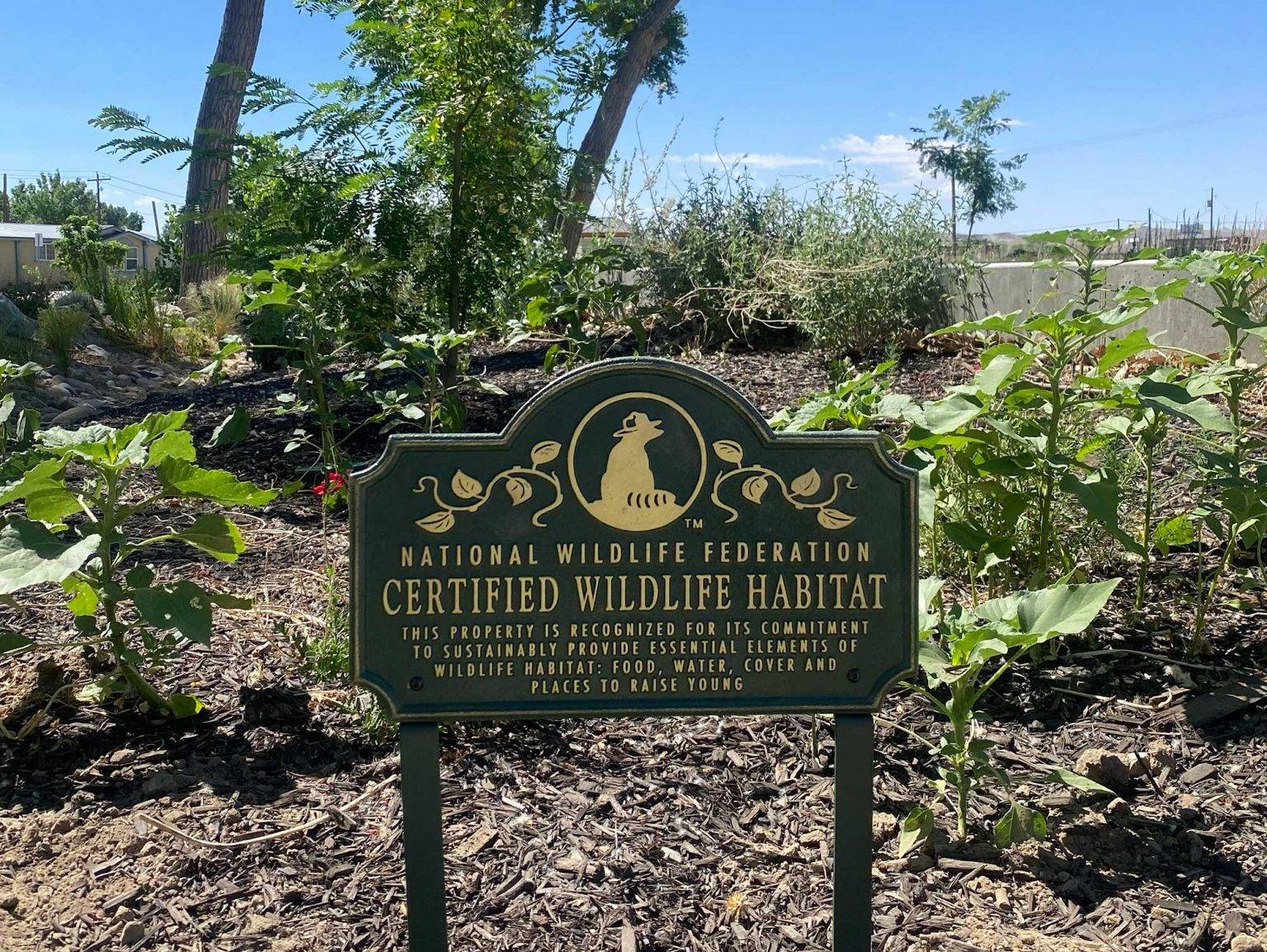By Robin Hunt
Pearl Baker Park is a public park project designed and carried out by Green River’s Epicenter for fostering both reflection and education, and now, Pearl Baker Park has been recognized by the National Wildlife Federation (NWF) for having successfully created a Certified Wildlife Habitat.
“We decided to certify our habitat, Pearl Baker Park and Outdoor Classroom, as a way to honor the work that had been done by the community, volunteers and our organization. It’s been a joy to watch what was a vacant lot of trees turn into a lush little habitat along the town canal that attracts insects, birds and lizards. We’ve seen hummingbird moths, Northern Flickers, bumblebees, whip-tailed lizards and more,” said Epicenter Director Maria Sykes. “Revitalizing that space was a community effort and it has made it much more inviting to wildlife. It’s so alive now!”
NWF celebrates this effort to create a garden that supports birds, butterflies, bees, frogs and other local wildlife. Every Certified Wildlife Habitat garden provides natural sources of food, water, cover and places to raise young and is maintained in a sustainable way that incorporates native plants, conserves water and doesn’t rely on pesticides.
“We are excited about this new Certified Wildlife Habitat as it provides native plants and essential habitat elements. Research shows certified properties have the potential to support twice as much wildlife compared to non-certified properties.” Said Mary Phillips, Head of Garden for Wildlife Certified Wildlife Habitat.
Pearl Baker Park recently added a pavilion and features walking paths, over 300 native or naturalized plants, educational signage, natural playscapes, a concrete amphitheater and picnic tables, all shaded by towering historic cottonwood trees.
The park is open every day from sunrise to sunset for locals and visitors alike, and is located at the intersections of S Long Street and Green River Avenue.
For more information on NWF’s Garden for Wildlife™ movement and how to qualify to have a garden space recognized as a Certified Wildlife Habitat, visit nwf.org/garden.

